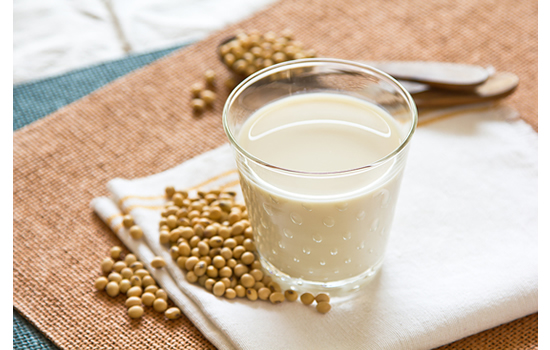There are dozens of non-dairy milk brands and types and each of these can vary nutritionally. Plain and unsweetened dairy free milk are usually the most practical choice.
Below are several non-dairy milks and their nutritional positives and negatives:
Soy milk
Soy milk is appreciated for it’s high concentration of protein. Soymilk is quite similar to cow’s milk in relation to protein and has 8-12 grams per 1 cup serving. Protein sourced from this milk also helps with bone strength and control cholesterol levels.
Soy should be limited to 3 servings per day as it can be a very common allergen. Plus, if the diet already includes a variety of soy-based foods, it might benefit to choose an alternative source of milk.
Hemp milk
Hemp milk is appreciated for its ability to offer a rich source of omega-3 fats. By drinking a single glass of hemp milk it is possible to get more than enough of the RDA for omega-3 fats. Compared to other milk; it is 6 times as rich as cow’s milk and 4 times as rich as soy milk. However, this source of milk isn’t particularly attractive when it comes to protein.
Almond Milk
If following a strict calorie controlled diet, almond milk is certain to offer an attractive choice because it is much lower in sugars and calories compared to other nondairy milks. This milk is also rich in heart-healthy monounsaturated fats. However, this type of milk isn’t partially high in protein.
Oat Milk
A provider of fiber comes in the shape of oat milk. A regular serving of oat milk contains about 4 grams of fiber and a modest protein amount. But, this type of milk is quite high in relation to calories and sugar.
Rice Milk
Rice milk is the preferred type of milk for those with a low tolerance level with allergies. But, rice milk is much lower in protein content compared to the others (soy, hemp, and almond) and has a higher concentration of calories and sugar.
What non-dairy milk is the most desirable?
Overall, the type of non-diary milk that is rated best in regards to nutritional benefits (omega-3 fatty acids and protein) is hemp and soy milk. A benefit of almond milk is the low concentration of calories and sugar. Oat milk can offer the benefit of being a great source of fiber and protein, but it does have a lot more calories and sugar. The type of milk that comes last is rice milk. This is mainly due to the fact it is high in calories and sugar, and doesn’t provide that well in relation to fiber or protein.
Do non-dairy milks contain high sodium and sugar?
Non-dairy milks include more than healthy nutrients. The majority include added salt, sugar, and other ingredients to help with improving the taste. A high amount of flavoring can actually turn the milk into something that is more like a dessert.
Sugar content in unflavored milk can reach a high limit of 20g per serving. The sodium (salt) content is closer to 35-180mg for each serving. A preferred limit of sugar is 12 grams of less for every serving (100mg).

Speak Your Mind